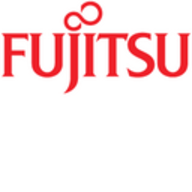![Dell PowerEdge M [EOL] Logo](https://images.peerspot.com/image/upload/c_scale,dpr_3.0,f_auto,q_100,w_64/nb70b5ansummme9cc5q5ymwyalbv.png)

Fujitsu Primergy BX900 Series and Dell PowerEdge M Series compete in the blade server systems category. While Fujitsu offers flexible pricing and robust support, Dell stands out as the more powerful choice due to its enhanced features, justifying the higher cost.
Features: Fujitsu Primergy BX900 Series provides energy efficiency, sophisticated cooling technology, and high scalability for growing businesses. Dell PowerEdge M Series features high performance, integration capabilities, and advanced networking features, with a focus on strong integration for functionality.
Ease of Deployment and Customer Service: Deployment of Fujitsu Primergy BX900 Series is straightforward with comprehensive service options, adaptable to various IT environments. Dell PowerEdge M Series offers efficient deployment processes with responsive customer service, setting a high standard for enterprise solutions.
Pricing and ROI: Fujitsu Primergy BX900 Series offers competitive upfront costs with favorable ROI due to its energy-efficient operation. Dell PowerEdge M Series, with a higher initial cost, provides significant ROI over time, supported by its strong features, making it valuable for long-term investment.
| Product | Market Share (%) |
|---|---|
| Dell PowerEdge M | 16.9% |
| Fujitsu Primergy BX900 Series | 2.0% |
| Other | 81.1% |

| Company Size | Count |
|---|---|
| Small Business | 12 |
| Midsize Enterprise | 3 |
| Large Enterprise | 10 |
Dell PowerEdge M is known for maximizing efficiency with high core and RAM density, supporting virtual environments and ensuring reliable performance and impressive scalability.
Known for its cost-effectiveness, Dell PowerEdge M offers robust performance and extensive management features like iDRAC and OpenManage for centralized monitoring. It provides strong security capabilities and flexible interface options. Key areas for improvement include boot time delays from POST checks and challenges with iDRAC instance, needing better networking and connectivity options including AMD CPUs and Ethernet enhancements. Users highlight the need for improved scalability, VLAN configurations, and caching. Dell PowerEdge M primarily supports applications like server virtualization and data center consolidation, operating effectively in cluster environments like solar power plant data logging.
What are the key features of Dell PowerEdge M?Dell PowerEdge M finds its implementation in critical applications such as server virtualization and compute, addressing wide-ranging workloads from administrative tasks to scientific computing. Organizations leverage its capabilities in virtual machine hosting, hyper-converged infrastructure management, and balanced load handling, enhancing its effectiveness in environments like solar power plant data logging.
The Fujitsu Server PRIMERGY BX900 S2 chassis is the rock-solid foundation for Fujitsu's blade ecosystem, providing a reliable, flexible and efficient platform for building a converged infrastructure. The system provides a modular approach to create an IT infrastructure. The chassis includes all needed infrastructure elements such as power supplies and fans, networking, and management. The Fujitsu blade server is easy to upgrade, maintain and customize. Inside, you can mix and match almost any combination of server storage and connection blades to run your choice of operation systems and applications.
We monitor all Blade Servers reviews to prevent fraudulent reviews and keep review quality high. We do not post reviews by company employees or direct competitors. We validate each review for authenticity via cross-reference with LinkedIn, and personal follow-up with the reviewer when necessary.